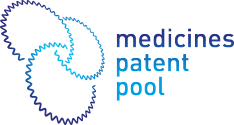La transition vers de nouveaux traitements du VIH (en anglais)
26 juillet 2017
By Greg Perry, Executive Director of the Medicines Patent Pool, and Lelio Marmora, Executive Director of Unitaid.
Originally published on the Unitaid website.
This week’s 9th International AIDS Society Conference on HIV Science takes place in Paris, the site of the co-discovery of the HIV-1 virus and an epicentre of global AIDS research. The programme offers the international community an opportunity to take stock of both progress and challenges in preventing, diagnosing and treating the virus.
We have reason to be optimistic. On Thursday, UNAIDS reported a record 19.5 million people are accessing antiretroviral therapy, and for the first time more than half of all people living with HIV are on treatment. At no other time in history has the science of care been so advanced for the potential benefit of so many. New antiretrovirals (ARVs) and formulations that can improve treatment adherence, viral suppression and quality of life could get the world closer to ending the epidemic. Ensuring their adequate delivery and uptake in low- and middle-income countries (LMICs), with 90 per cent of the global HIV burden, should be top of mind for the community at this July’s conference.
Unitaid, strongly backed by the government of France, is engaged in overcoming barriers to health product access in LMICs. The organisation launched the Medicines Patent Pool (MPP) to improve the HIV response by licensing World Health Organization (WHO)-recommended and newly-registered medicines, as well as encouraging the development of suitable combination-products for developing nations.
When we started the MPP a little more than a half decade ago, quality-assured generic versions of new ARVs took 5-10 years to reach treatment programmes in resource-limited settings at affordable prices after their approval in the US and Europe. Millions of people living with HIV could not access the best treatments, and were forced to rely on older drugs with high toxicity. Once-a-day fixed dose combinations were rare. New medicines, including those used when people developed resistance, were costly. Sub-optimal care was the norm in the LMICs.
Today, thanks to the work of the MPP and other initiatives, low-cost generics are becoming more widely available. The MPP has signed licences for 12 ARVs, including WHO-recommended medicines for first- and second-line treatment, and new HIV medicines such as dolutegravir (DTG) and tenofovir alafenamide (TAF). One of the drugs of choice for people living with HIV in high-income countries, DTG is recommended by the WHO as part of an alternative first-line regimen. It is easily administered as a small tablet taken once-daily and has low-side effects and a high barrier to resistance. TAF is highly effective at low doses.
With the government of Kenya and other global partners, Unitaid recently introduced the first generic version of DTG, initially provided to 27,000 patients in the country. The MPP is working with patent holder ViiV Healthcare and ten generic manufacturing partners to produce DTG as both a stand-alone and as a novel fixed dose combination. If all goes well, MPP’s generic partners will file multiple dossiers for DTG and combinations that include DTG in dozens of developing countries by year’s end. The organisation is now targeting pipeline alternatives and new delivery systems that can be licensed soon to speed their availability in developing countries.
At the IAS on Sunday, the WHO released new guidelines for transitioning to new ARVs. New, optimized treatment regimens and formulations may not only improve clinical response, but could also help to overcome challenges with resistance and treatment failure. With the rapid availability of generics, innovations such as DTG could also provide significant savings for national budgets and thus boost scale-up in high prevalence countries.
Although MPP licences contribute to accelerating the development and approval of generics, many challenges remain. The international community must focus on strengthening local regulatory authorities and fast-track market authorization so that new antiretrovirals become available in the LMICs more quickly. Supported by Unitaid, the WHO’s Prequalification Programmehas a key role to play as a collaborative mechanism to accelerate regulatory approval. Continued studies on the use of DTG and other new formulations in key populations are crucial. Unitaid is funding clinical trials to gauge safety and efficacy of DTG in pregnant woman and people living with tuberculosis. The organisation is also supporting projects to facilitate the introduction of new treatment regimens.
We have come a long way since Francoise Barre-Sinoussi isolated a retrovirus that kills T-cells from the lymph system at Institut Pasteur three decades ago. From the approval of zidovudine (AZT) in 1987 and HAART in 1995 to today’s new innovations, we have the tools at our disposal to end AIDS in this generation. We must all redouble efforts to ensure their delivery to people most in need.







